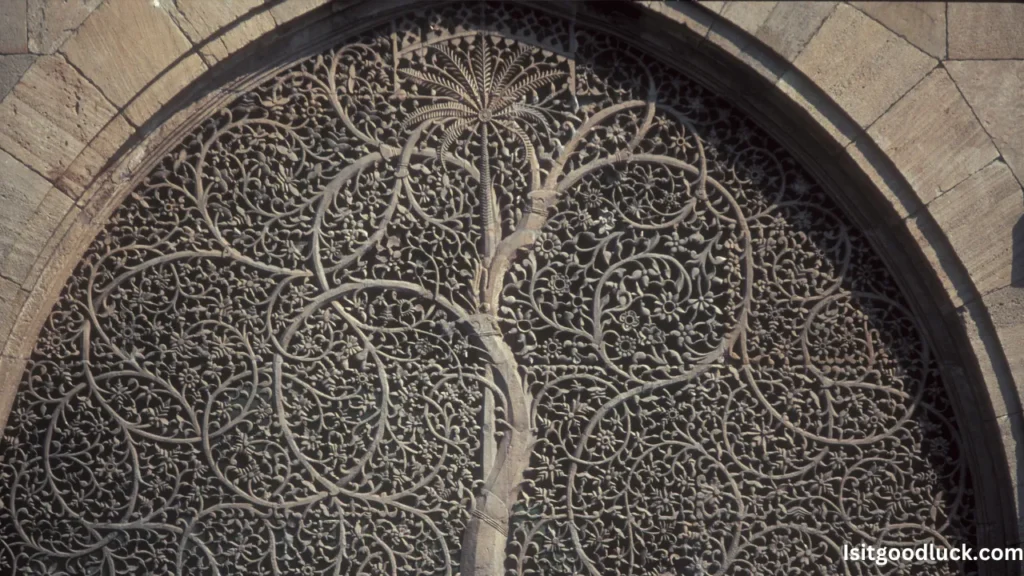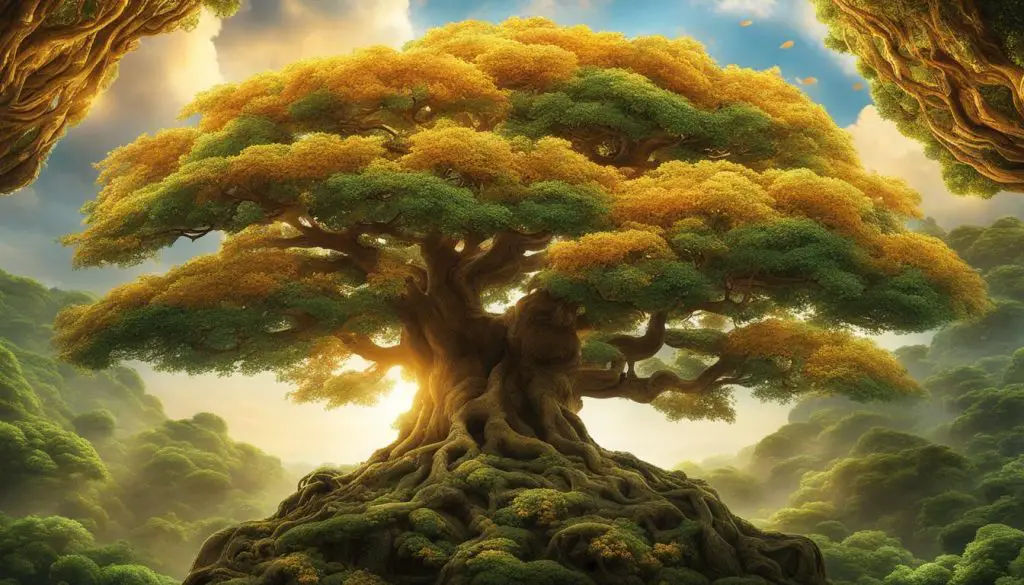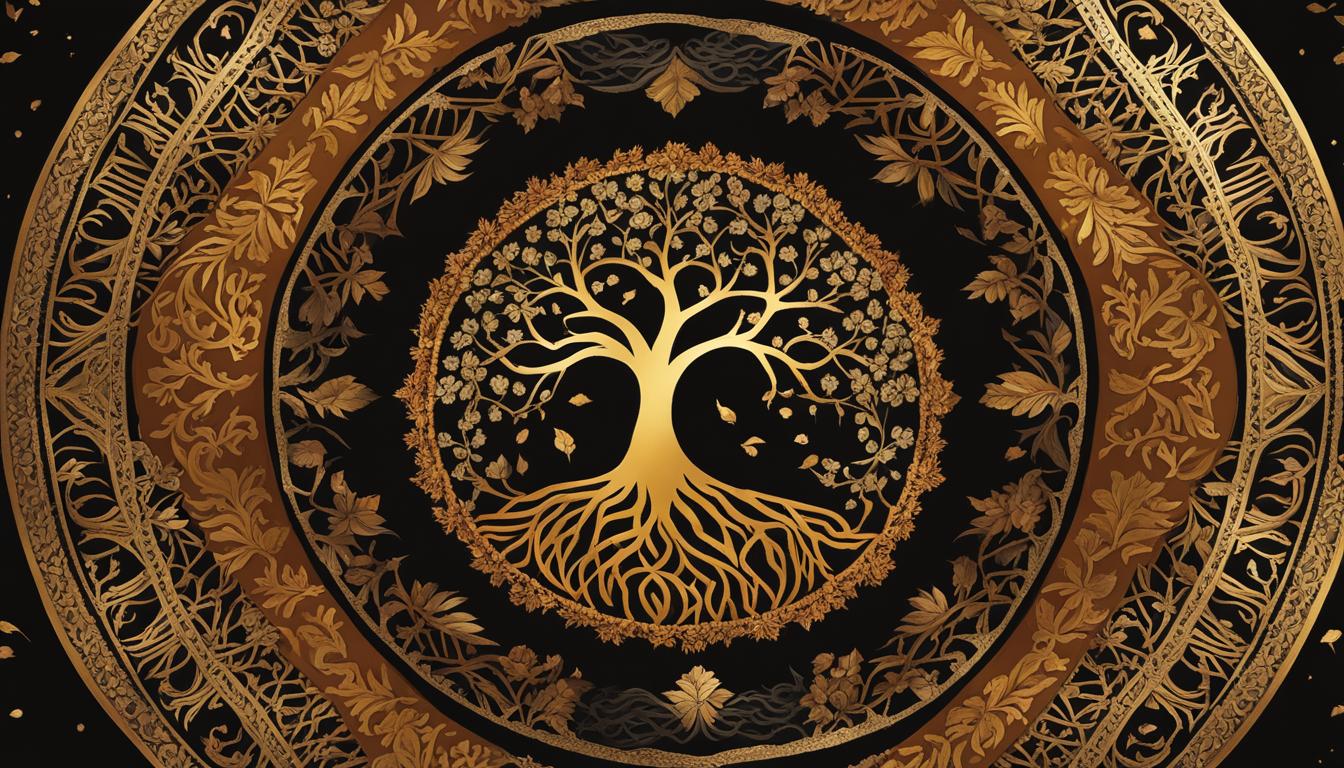Have you ever wondered about the symbolism and meaning behind the Tree of Life? This ancient symbol holds deep significance and is believed to bring abundance, prosperity, and positive energy into our lives.
Throughout history, different cultures and belief systems have revered the Tree of Life, attributing it to spiritual nourishment and interconnectedness.
Contents
- 1 The Symbolism and Meaning of the Tree of Life
- 2 The Tree of Life as a Symbol of Abundance and Prosperity
- 3 The Tree of Life in Different Cultures
- 4 The Spiritual Significance of the Tree of Life
- 5 The Symbolism of the Tree of Life and Prosperity
- 6 Conclusion
- 7 FAQ
- 7.1 What is the symbolism of the Tree of Life?
- 7.2 What is the meaning of the tree of life in ancient beliefs?
- 7.3 How is the tree of life associated with abundance and prosperity?
- 7.4 What is the significance of the tree of life in different cultures?
- 7.5 What is the spiritual significance of the tree of life?
- 7.6 How is the tree of life associated with prosperity?
- 8 Source Links
Key Takeaways:
- The Tree of Life is a powerful symbol in various cultures and belief systems.
- It represents abundance, prosperity, and positive energy.
- Different cultures attribute various qualities to the tree of life, but overall, it symbolizes spiritual growth and the cycle of life.
- The tree of life is associated with prosperity and serves as a reminder to nurture our personal growth.
- It holds deep spiritual significance, representing positive energy, vitality, and the path to self-discovery.
The Symbolism and Meaning of the Tree of Life
The Tree of Life holds deep symbolism and meaning in many ancient beliefs and cultures. In ancient Norse mythology, the tree of life, known as Yggdrasil, symbolizes the interconnectedness of the nine worlds.
In Kabbalah, the Tree of Life represents the pathways to spiritual enlightenment and higher levels of consciousness. In Celtic mythology, it is a symbol of balance and harmony.
Different cultures attribute various qualities to the tree of life, but overall, it symbolizes spiritual growth, transformation, and life cycle. It represents the ever-changing nature of existence and the continuous cycle of birth, death, and rebirth.
The tree’s roots, grounding deep into the earth, symbolize stability, while its branches, reaching toward the sky, represent reaching for higher spiritual realms.
Also read: Is It Good Luck When You Get A Random Hug?
Throughout history, the Tree of Life has been used as a metaphor for the interconnectedness of all living things. It signifies the unity of creation and the fundamental interdependence between humans, nature, and the divine.
The symbolism of the Tree of Life reminds us to cultivate our spiritual growth, nourish our connections with others, and embrace the harmony that comes from recognizing our place within the larger web of life.
| Culture | Symbolism |
|---|---|
| Ancient Norse Mythology | The interconnectedness of the Nine Worlds |
| Kabbalah | Pathways to spiritual enlightenment |
| Celtic Mythology | Balance and harmony |
The Tree of Life as a Symbol of Abundance and Prosperity
The tree of life has long been recognized as a symbol of abundance and prosperity. Its strong roots firmly planted in the earth symbolize a solid foundation, while its branches reaching towards the sky signify growth and expansion.
Just as a tree flourishes and bears fruit, the tree of life represents the potential for abundance in our lives.
Many cultures believe that connecting with the energy of the tree of life can attract prosperity and abundance. By embracing the tree’s strength, resilience, and growth, we can nurture our dreams and aspirations, leading to abundant life.
As you strive to cultivate abundance, envision yourself as the tree of life, rooted in your values and purpose, and reaching upwards towards your goals. Embrace the abundance and prosperity the Tree of Life represents, and watch as they manifest in your life.
Also read: Is It Good Luck to Keep a Mona Lisa Painting?
The Tree of Life in Different Cultures
The Tree of Life holds deep meaning and significance in various cultures worldwide. Let’s explore how this powerful symbol manifests in different belief systems:
Ancient Norse Mythology
In ancient Norse mythology, the tree of life is known as Yggdrasil. It is a massive ash tree representing the interconnectedness of the nine worlds.
Yggdrasil is believed to hold the cosmos together. Its roots delve deep into the underworld, while its branches extend into the heavens.
Hinduism
In Hinduism, the tree of life is called Kalpavriksha, known as the “wish-fulfilling tree.” It is a divine tree that grants blessings and fulfillment. Kalpavriksha is often depicted in Hindu art, symbolizing abundance, prosperity, and spiritual growth.
Buddhism
In Buddhism, the tree of life is associated with the Bodhi tree, under which Gautama Buddha attained enlightenment. The Bodhi tree symbolizes wisdom, knowledge, and spiritual awakening.
It reminds us of the path to liberation and the potential for enlightenment that exists within all beings.
Native American Cultures
In Native American cultures, the Tree of Life represents the connection between the physical and spiritual realms.
It symbolizes the harmony and balance between humans, nature, and the divine. The tree of life is often seen as a source of guidance, protection, and spiritual nourishment.
| Culture | Tree of Life Symbolism |
|---|---|
| Ancient Norse Mythology | The interconnectedness of the Nine Worlds |
| Hinduism | Abundance and fulfillment |
| Buddhism | Enlightenment and spiritual awakening |
| Native American Cultures | Connection between the physical and spiritual realms |
The presence of the Tree of Life in different cultures highlights its universal appeal and significance. It is a powerful symbol of interconnectedness, abundance, spiritual growth, and balance.
Whether it’s the Norse Yggdrasil, the Hindu Kalpavriksha, the Buddhist Bodhi tree, or the Native American tree of life, this symbol resonates with people worldwide, transcending cultural boundaries.
The Spiritual Significance of the Tree of Life
The Tree of Life holds deep spiritual significance. It is regarded as a symbol of positive energy, vitality, and spiritual growth. Connecting with its energy is believed to bring harmony, balance, and a sense of grounding.
Many spiritual practices involve meditating on the Tree of Life to align with its divine energy and tap into its wisdom. The Tree of Life is a powerful guide on the spiritual journey toward self-discovery and enlightenment.
“The tree of life is a powerful symbol of our interconnectedness with all living things. Its branches reach towards the heavens, connecting us to divine energy and higher realms of consciousness. By embracing the energy of the tree of life, we can cultivate a sense of inner peace, balance, and connection with the universe.”
When we acknowledge the spiritual significance of the Tree of Life, we open ourselves to a world of infinite possibilities. It reminds us that we are not alone on our journey and that support is always available.
By tapping into the positive energy of the Tree of Life, we can manifest our desires, attract abundance, and experience profound spiritual growth.
The Tree of Life and Positive Energy
The Tree of Life is a beacon of positive energy. Its vibrant and flourishing presence serves as a constant reminder that life is an ever-evolving journey filled with potential and growth.
When we connect with the energy of the Tree of Life, we invite positivity into our lives and embrace a mindset of abundance.
| Benefits of Connecting with the Tree of Life | Ways to Tap into its Positive Energy |
|---|---|
|
|
By consciously engaging with the Tree of Life and embracing its positive energy, we can create a life filled with joy, abundance, and spiritual fulfillment.

The Symbolism of the Tree of Life and Prosperity
The tree of life is often associated with prosperity and abundance. Its vibrant and fruitful branches symbolize the abundance that life can achieve.
By embracing the energy of the Tree of Life, you can attract prosperity and create a life of abundance. The Tree of Life reminds us to nurture our dreams, ambitions, and goals just as it nurtures its branches and leaves.
It is a symbol of the limitless potential that exists within each of us to create a life of prosperity and fulfillment.
When we connect with the energy of the Tree of Life, we tap into the flow of abundance and invite it into our lives. Just as the tree receives nourishment from the earth, sun, and rain, we too can cultivate our sources of abundance.
By aligning ourselves with the wisdom and energy of the Tree of Life, we open ourselves up to opportunities and possibilities that can lead to financial prosperity, career success, and overall abundance in all areas of life.
Embracing the symbolism of the Tree of Life also reminds us of the importance of balance and growth. Just as a tree grows strong and tall with deep roots and expansive branches, we, too, must strive for balance.
By nurturing our personal growth and development, we create a solid foundation for prosperity to flourish. The Tree of Life guides us to find harmony in our relationships, careers, health, and spiritual well-being.
Incorporating the symbolism of the Tree of Life into your daily life can be as simple as visualizing its energy and abundance surrounding you. You can create a visual representation of the Tree of Life by drawing or painting it or by wearing jewelry or clothing adorned with the Tree of Life symbol.
Meditating on the Tree of Life can also help you connect with its energy and tap into its prosperity. By incorporating its symbolism into your daily practices, you can invite abundance and prosperity into your life.
| Benefits of embracing the symbolism of the Tree of Life | Ways to incorporate the symbolism of the tree of life into your life |
|---|---|
|
|
By embracing the symbolism of the Tree of Life and cultivating a mindset of prosperity and abundance, you can create a life filled with fulfillment, success, and joy.

Conclusion
The Tree of Life holds profound symbolism and meaning across cultures and belief systems. It represents abundance, prosperity, and spiritual growth. This powerful symbol reminds us of our interconnectedness with all living things and our potential for personal transformation.
Throughout history, the Tree of Life has been a source of positive energy, vitality, and spiritual nourishment.
We can tap into harmony, balance, and groundedness by embracing its energy. This connection allows us to attract abundance into our lives and create a fulfilling existence.
Whether the ancient Norse mythology’s Yggdrasil represents the interconnectedness of the nine worlds or the Celtic belief in balance and harmony, the tree of life transcends cultural boundaries. Its presence in different religions and belief systems underscores its universal appeal and significance.
As you explore the symbolism and meaning of the Tree of Life, remember that it is a powerful guide on your spiritual journey toward self-discovery and enlightenment.
Embrace its wisdom and nurture your dreams, ambitions, and goals. Just as a tree grows and flourishes, your potential for prosperity and fulfillment is limitless.
FAQ
What is the symbolism of the Tree of Life?
The Tree of Life is a powerful symbol in various cultures and belief systems throughout history. It represents abundance, prosperity, and positive energy.
What is the meaning of the tree of life in ancient beliefs?
The Tree of Life holds different meanings in different cultures and is associated with various beliefs and practices. It is seen as a source of spiritual nourishment and represents the interconnectedness of all living things.
How is the tree of life associated with abundance and prosperity?
The tree of life is often associated with abundance and prosperity. Its deep roots signify a strong foundation, while its branches reaching toward the sky represent growth and expansion. Many cultures believe that connecting to the energy of the Tree of Life can attract abundance and prosperity into one’s life.
What is the significance of the tree of life in different cultures?
The Tree of Life is a symbol that transcends cultural boundaries. It is found in various religions and belief systems worldwide. In Hinduism, it is known as Kalpavriksha, representing fulfillment and divine blessings. In Buddhism, it symbolizes enlightenment and the path to nirvana. In Native American cultures, it is seen as a connection between the physical world and the spiritual realm.
What is the spiritual significance of the tree of life?
The Tree of Life holds deep spiritual significance. It is regarded as a symbol of positive energy, vitality, and spiritual growth. Connecting with the energy of the Tree of Life is believed to bring harmony, balance, and a sense of grounding. Many spiritual practices involve meditating on the Tree of Life to align oneself with its divine energy and tap into the wisdom it represents.
How is the tree of life associated with prosperity?
The tree of life is often associated with prosperity and abundance. Its vibrant and fruitful branches symbolize the abundance that life can achieve. By embracing the energy of the tree of life, individuals can attract prosperity and create a life of abundance.






